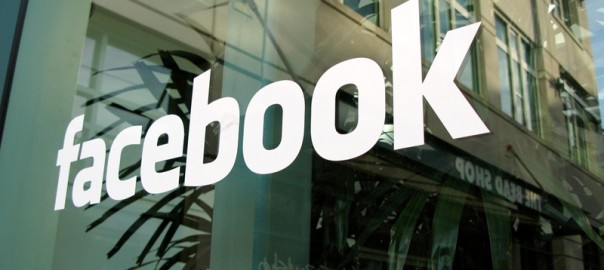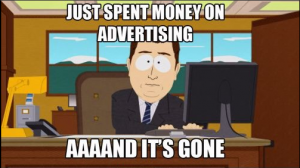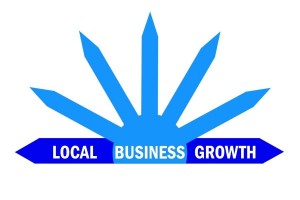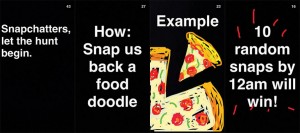
The word “engagement” incites both pleasure and pain for many. It’s terribly over used in marketing vernacular, but when we see it realized, it can be fantastically rewarding. Nowhere is engagement more weighted than in social media, where performance is dictated by the engagement we earn, and increasingly, pay for. I’m talking about clicks, comments, upvotes and likes. As informed users of the digital landscape we work and live in, for better or for worse, engagement determines: what we see (trends), who we are (brand building) and how effective our online efforts resonate with others (content performance, receptivity). The same goes for businesses and brands, big and small.
In this blog, I’ll look into how Facebook, the king of social, has changed in the past few years and address the pitfalls and popular strategies businesses are overcoming to “boost” engagement. First, let’s quickly address the validity of “Page Like” and its relevance in 2015.

Q: Do Facebook Page Likes really matter? Yes, but only if they are qualified. If you want to grow a Facebook audience that actually cares about your content, you have to reach it first, and the only way to do that is to advertise your page through detailed targeting. With advanced knowledge of your target audience, most notably through User or Buyer Personas, you can promote your page and slowly start to grow your follower base. Now, just because you have followers DOES NOT mean you will earn engagement on your posts. Your content and your targeting must align with your Persona for effective message resonance. Which brings us to our first tip …
Tip 1: Consider a Paid Social Media Strategy
Here at Kuno, with regards to Facebook performance, we’ve been saying “Pay to Play” for a long time. Ever since it became common knowledge that Facebook would be prioritizing “high-quality” content over Business Page content (about 2014), companies have been forced to pay the social platform for the reach they had once earned organically. This is a good thing: It decongests the Facebook UX of page solicitation and forces marketers to fight harder for the little organic traction they may earn.
If you’re a business on Facebook, and you are not paying for reach or engagement through the Facebook Ads platform, you are neglecting the full capability and utility of Facebook as a social tool. Keep in mind, paid social media is not an end-all solution, but rather it is meant to supplement and support your organic engagement. You can pay Facebook $ 50 for Likes, comments and reach for a single post, but if your content is bad in the first place, don’t expect false, paid enthusiasm. It doesn’t work, and it kills your wallet (I’m speaking from experience here). There are several online resources on paid social strategy that go into more detail (see crush campaigns and Wordstream) but for starters, I would recommend dedicating a small portion of your demand generation budget to paid social.

Tip 2: Reexamine Content Strategy and Post Type
Pattern recognition and optimization is key for any marketing objective, and Facebook engagement is no different. Note: Increasingly, posts that earn comments and shares are considered more valuable than posts that only earn “Likes” to the Facebook Newsfeed algorithm, and consequently will earn a higher organic reach. In addition, posts containing promotional words like buy, sell, enter or download are easily recognized by Facebook’s Newsfeed algorithm as “direct sales language” (the complete opposite of authentic discussion Facebook encourages amongst its users), and their organic reach will be curtailed accordingly. If you’ve been posting for a while, you should revisit high-performing content and re-incorporate, reshape or reword that content for future posts. Do not copy word for word, image for image. You may get away with this on other platforms, but Facebook audiences will be dissuaded by your laziness and lack of consideration.
So, what types of content performs well on Facebook?
- Questions or requests directly addressing your audience: “Friends, quick question: Who, what, where” or “Which would you rather have …” or “In your opinion, who, what, where, which…” or “In one word, how would you describe …” When addressing your following, be honest, genuine and don’t be afraid to test the water with controversial subjects. Debatable controversy and conflict often produce the most authentic, insightful discussions. Just be smart about it — as a social media manager, you must control your conversation. Also remember to keep your request or question “low-lifting.” In other words, keep your call-to-action short and simple. Simply Measured did a great job of highlighting engaging posts with Better Homes and Gardens social media.
- Video: There’s no question about it: Facebook is seriously prioritizing video content in its news feed. Not only has it implemented a robust video hosting platform with default news feed auto-play (optional for users), but a simple click, screen enlargement, volume raise or even a 3-second pause as you scroll will indicate “engagement” to the news feed algorithm, and, consequently, boost the organic reach of the video. More recently, Facebook announced plans to introduce live video from major influencers. Why the focus? Because video, as a medium, is arguably the easiest type of content to interpret and internalize. (Think about it: Read a book or watch a movie?) But the question remains: Does everyone need video to earn high engagement marks? The short answer: No, not really, but if you have the resources at hand it certainly would help. Note: Facebook prioritizes its own content, so, if you do have a video to share, make sure you upload the raw file onto your page instead of simply sharing the YouTube URL.

- Photo sharing: Photo sharing can be a considered a pinnacle content type to any social media strategy. High-quality images pop out on users’ news feeds and can communicate an idea better than a lengthy status update. Photos work best to express FOMO, or the Fear of Missing Out, and are best used to recap and show off the success of a recent event. Whether it be the newest smartphone or DSLR, investing in your own high-quality camera is a good idea for affordable, in-house social content creation. NOTE: When scheduling an image for Facebook, DO NOT include a link within the photo update. Facebook will punish the reach of these types of posts because they consider this strategy misleading to users. See below:

Other types of content strategies, like helpful blogs that resolve common pain points or ongoing micro campaigns (tip of the week, quote of the day) can make a big difference for establishing brand authority and follower receptibility.
Tip 3: Run a Contest
There’s no doubt a Facebook contest (especially during the holidays) will boost the visibility and, consequently, the engagement of your page, but it’s important to make sure you are attracting the right kind of engagement from the right kind of people.
When coming up with a concept for your contest, your offer should be of equal or greater value than what you are asking for in return. For example, if you’re asking a user to submit their name, email, mailing address and a photo submission through a third-party application, make sure that “Chance to Win” prize (download, access or product) is enticing enough to encourage submission or conversion. If it’s too easy to enter your contest, you’ll have unqualified, random users jumping at anything for a quick win and soon forgetting your page after the contest. If your contest is too demanding to enter, users will regard your contest attempt as a data-trap clickbait scheme. I recommend starting with this how-to guide from HubSpot.
Tip 4: Dive Deeper into Community Reciprocity
I like to think of reciprocity as the foundation to any human relationship. When applied to social media (Facebook), the digital extension of our social lives, the value of reciprocity can rarely be overestimated. So when we examine our Facebook community, it’s critical to fish out and associate yourself with those few individuals who are outspoken about the same subject matter that you, or your business, stand for. Call them what you will (brand ambassadors, advocates, influencers), but these folks, when rewarded with your attention (share or mention), will reciprocate your engagement and, ultimately, add to your organic visibility — something in shrinking abundance for businesses on Facebook. If you don’t know where to look for your advocates, a great place to start is examining your competitors and their communities.

Pro Tip: If you “share” a popular, trending update from a large, highly visible influencer (person or page) that shared post will attribute a percentage of its own reach to your share, increasing visibility (and the likelihood of agreeable engagement) in the process. Share economics 101!
Tip 5: Revisit Multichannel Consistency and Frequency
Another way to boost your Facebook page engagement is to support its reach through other owned media channels and digital properties. Before you do this, it’s critical you claim and customize your Facebook URL to accurately reflect your brand or business. You can do that here: https://www.facebook.com/username. Just remember you’ll only be able to change it once afterward. Once customized, share your Facebook page URL via email, through other social media networks or, if your business is located in a high-traffic area, on display fliers and posters.
Another suggestion is to connect your Instagram account to your Facebook page and then SHARE successful Instagram posts to you Facebook Page. This helps the visibility of both channels.
Publishing frequency, and how you use your time to manage that frequency, will play a strong role in Facebook performance, especially when starting out. Most Facebook pages post once or twice a day, but based on your paid budget and target industry, that could fluctuate. You need to test both content type AND frequency to find your sweet spot benchmark and start from there. In my opinion, HubSpot’s Social Inbox is one of the most efficient tools for monitoring, scheduling and optimizing your social content.
Conclusion
Due to the constant platform changes and variability in business goals, finding that satisfactory engagement rate can be a fickle and elusive process. But with the right strategies in place and a keen eye for opportunity and persona empathy, you can start to claim your space on the Goliath social network — one “Like” at a time.
Did I miss anything? Let me know what works for you!
Digital & Social Articles on Business 2 Community(147)





